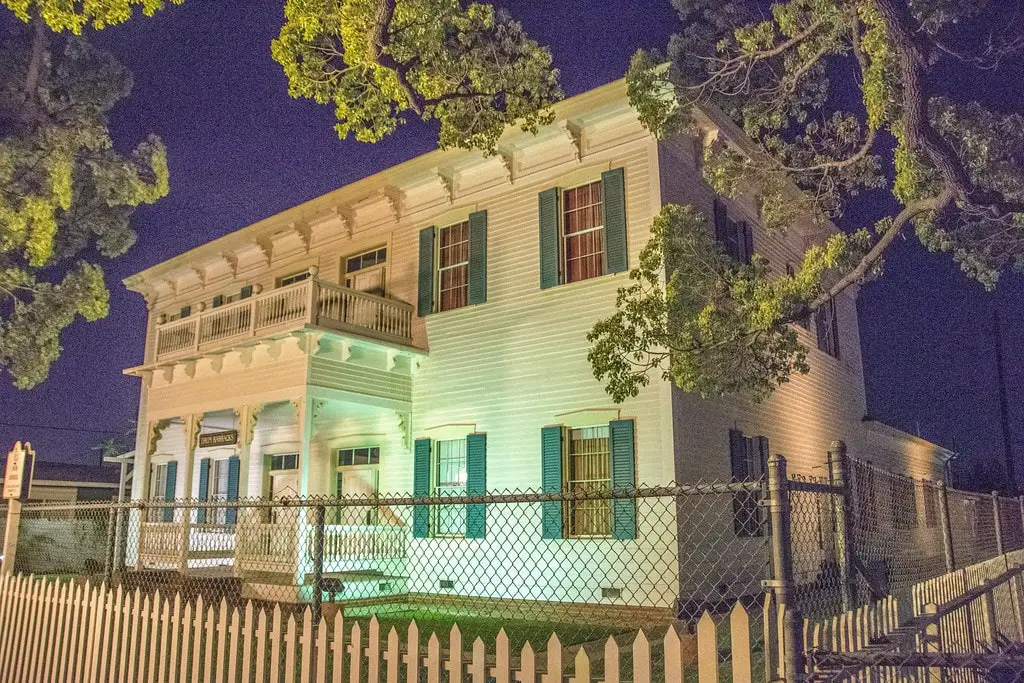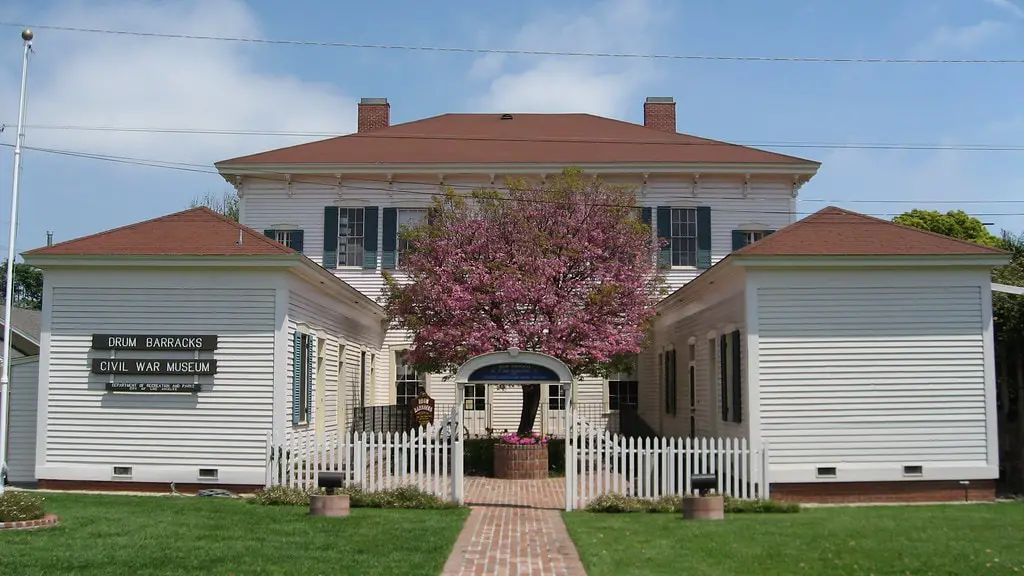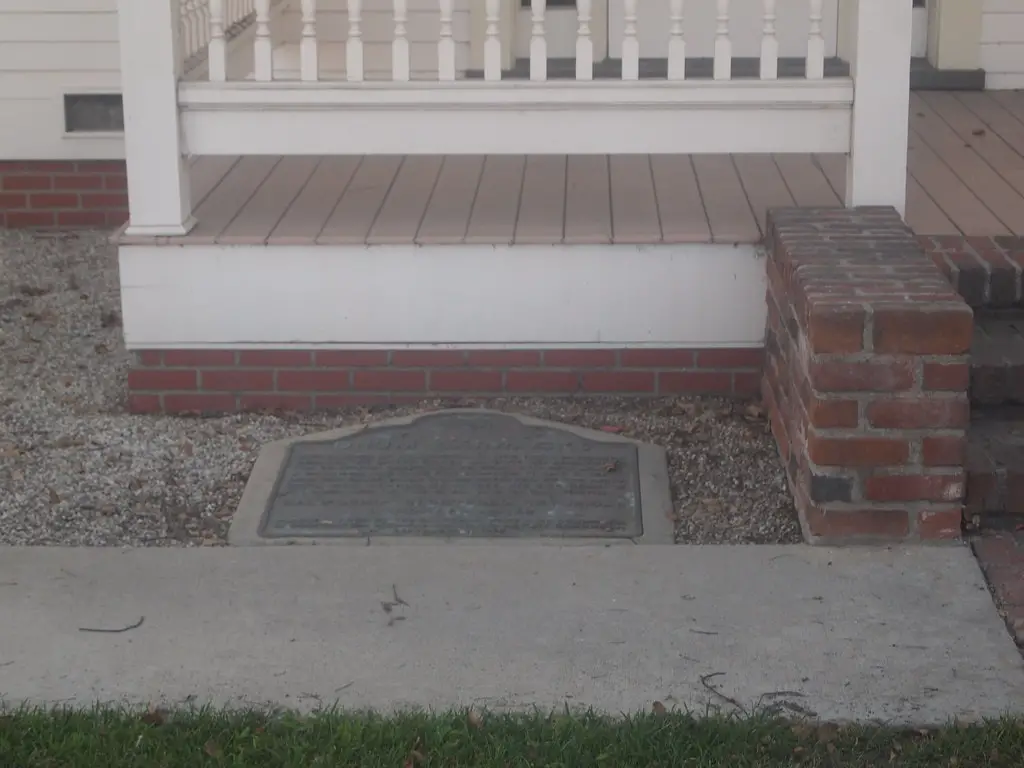Drum Barracks: A Civil War Legacy in Wilmington, Los Angeles
Nestled in the heart of Wilmington, Los Angeles, California, Drum Barracks is a testament to a tumultuous era in American history. Established between 1862 and 1863, this military facility is the last of its kind in the Los Angeles area, echoing the echoes of the American Civil War.
Its strategic location near the bustling Port of Los Angeles added to its significance during a time when the loyalty and security of the area were of paramount concern to the Union.
The Drum Barracks, constructed in the Greek Revival architectural style, was a military installation and an architectural marvel of its time. The facility originally encompassed 19 buildings spread over a 60-acre expanse in Wilmington, with an additional 37 acres near the harbor.
This expansive construction came at a substantial cost of $1 million, a significant investment in the 1860s. Today, the site is recognized for its historical importance, and it was listed on the U.S. National Register of Historic Places on February 12, 1971. It is also distinguished as a California Historical Landmark and a Los Angeles Historic-Cultural Monument.
Since 1987, Drum Barracks has transitioned from a military facility to a public museum, the Drum Barracks Civil War Museum. This transformation has allowed the site to serve as a crucial educational resource, offering insights into the Civil War’s impact on California and the broader United States.
Museum guests can delve into various artifacts and displays that vividly bring to life the experiences of the 1860s. The museum not only preserves the legacy of the Civil War but also highlights California’s significant role in this pivotal period of American history.
While exploring the rich history of Drum Barracks, visitors to Los Angeles can also engage in various things to do in the city, immersing themselves in a blend of historical exploration and modern-day attractions.
The Drum Barracks Civil War Museum stands as a beacon of historical preservation, inviting people to delve into a critical chapter of America’s past while appreciating the present advancements.
Drum Barracks During the Civil War
Strategic Role in the Union’s Efforts
During the American Civil War, Drum Barracks emerged as a pivotal site for the Union’s military operations in the West. Established amidst the war’s outbreak in April 1861, the barracks played a crucial role in maintaining the Union’s presence in Southern California.
The area’s mixed loyalties, with many residents hailing from Southern states, made establishing a Union stronghold essential. Drum Barracks served as the headquarters for the District of Southern California, overseeing military operations and serving as a base for Union troops.
The California Column and the Battle of Picacho Pass
One of the most notable units stationed at Drum Barracks was the California Column, commanded by Colonel James Henry Carleton. This unit, comprising between 2,000 and 7,000 soldiers, was instrumental in the Union’s efforts in the West. In 1862, the Texas Volunteers, fighting for the Confederacy, had seized control of large portions of the New Mexico Territory.
The California Column, marching from Drum Barracks, played a decisive role in the Battle of Picacho Pass, the westernmost battle of the Civil War. This victory was crucial in maintaining Union control over the Southwest.
Wilmington’s Transformation During the War
The presence of Drum Barracks had a significant impact on the surrounding area. Wilmington, which housed the barracks, experienced a transformation, becoming a bustling community during the war years.
Its population during this period surpassed that of Los Angeles, highlighting the barracks’ influence on local growth and development. The influx of soldiers and military activities turned Wilmington into a thriving hub, significantly different from its pre-war state.

Colonel Richard C. Drum and the Naming of the Barracks
The Man Behind the Name
Contrary to popular belief, Drum Barracks was named after Colonel Richard Coulter Drum, not after a percussion instrument. As the Assistant Adjutant General of the Army’s Department of the Pacific in San Francisco, Colonel Drum oversaw the region’s military operations.
However, it’s interesting that Colonel Drum never visited the barracks named in his honor, a testament to his influence in military circles despite his physical absence from the site.
The Misconception and Clarification
The naming of Drum Barracks is often surrounded by misconceptions, primarily due to the common association of the word ‘drum’ with the musical instrument. This confusion has led to various myths and folklore about the origin of the barracks’ name.
However, historical records indicate that the name honors Colonel Drum’s contributions to the Union’s military efforts in the Pacific region, particularly during uncertainty and conflict.
Drum’s Legacy in Military History
Colonel Richard C. Drum’s legacy extends beyond the naming of the barracks. His administrative and strategic skills were crucial in managing the Union’s military affairs in the Pacific.
The naming of Drum Barracks in his honor is a fitting tribute to his significant role in the Civil War, especially in a region far removed from the main battlefields of the East.
His name, etched into the history of this site, serves as a reminder of the far-reaching impacts of the Civil War and the individuals who shaped its course.
Life at Drum Barracks and Wilmington’s Transformation
Daily Operations and Soldier Life at the Barracks
The daily life at Drum Barracks during the Civil War blended military discipline and community interactions. Soldiers here engaged in various activities, from drills and training exercises to guard duties.
The barracks also served as a logistical hub, managing supplies and equipment essential for the Union’s military efforts in the region. This constant buzz of activity made Drum Barracks a focal point of military life in Southern California.
Economic and Social Impact on Wilmington
The establishment of Drum Barracks profoundly impacted Wilmington’s economy and social structure. The influx of soldiers and military personnel increased demand for goods and services, boosting local businesses and trade.
Once a quiet settlement, Wilmington transformed into a lively community, with new stores, eateries, and service establishments cropping up to cater to the growing population. This economic boom directly resulted from the barracks’ presence, highlighting the interplay between military installations and local economies.
Wilmington’s Demographic Shift During the War
The presence of Drum Barracks also influenced the demographic composition of Wilmington. The influx of Union soldiers, military staff, and their families significantly increased the town’s population.
This demographic shift not only altered the social landscape of Wilmington but also cemented its role as a critical military and logistical center during the Civil War, overshadowing even Los Angeles in terms of strategic importance.

Post-Civil War Era and Decline
The Transition to Peacetime and Reduced Military Presence
Following the conclusion of the Civil War, Drum Barracks experienced a gradual decline in military significance. The war’s end reduced the need for such a large military presence in the region.
As troops were reassigned or discharged, the bustling activity that once characterized the barracks began to wane. This transition from wartime footing to peacetime operations marked the beginning of the end for Drum Barracks as a military installation.
Deactivation and Neglect of the Barracks
By 1870, Drum Barracks had been officially deactivated, with the remaining military operations being transferred to other locations. The deactivation led to the abandonment and neglect of the facility.
Buildings that once housed soldiers and stored military supplies fell into disrepair, starkly contrasting the barracks’ former glory. This period of neglect reflected the shifting priorities of the post-war United States, as attention turned away from maintaining such facilities.
Auction and Sale of the Barracks Property
In the years following its deactivation, the U.S. Government decided to auction off the Drum Barracks property. The auction, held in 1873, resulted in the sale of the land and buildings to various individuals and entities.
Notably, Phineas Banning, one of the original donors of the land for the barracks, purchased five of the buildings. This sale marked the final chapter in the military history of Drum Barracks, as it transitioned from a strategic military site to a piece of local real estate, awaiting its next role in the history of Wilmington.
Preservation Efforts and Museum Establishment
Early Movements to Preserve Drum Barracks
The journey towards preserving Drum Barracks began in earnest in the early 20th century. Recognizing the site’s historical significance, the Native Sons of the Golden West, a prominent organization dedicated to preserving California’s heritage, designated Drum Barracks as a historic monument in 1927. This early effort marked the first step in acknowledging the site’s importance in American Civil War history.
The Transformation into a Civil War Museum
In 1963, a pivotal moment in the preservation of Drum Barracks occurred when the property was put up for sale, raising concerns about its potential demolition. This led to The Society for The Preservation of Drum Barracks, spearheaded by residents and history enthusiasts.
Their efforts, combined with the leadership of figures like Walter Holstein, Oliver Vickery, and Joan Lorenzen, were instrumental in saving the barracks. 1967, the State of California purchased the site, with the Society retaining responsibility for its maintenance. The barracks were officially turned into a museum in 1987, ensuring the preservation of this historic site for future generations.
State and City Involvement in Museum Operations
The transition of Drum Barracks into a museum was further solidified when the State of California handed over the property to the City of Los Angeles in 1986, under the condition that it continues to operate as a Civil War museum.
This transfer marked a significant collaboration between state and local authorities in preserving a vital piece of history. The Los Angeles Department of Parks and Recreation took over the operations, with private fundraising efforts supporting the museum’s maintenance and development.

Drum Barracks Today: Exhibitions and Educational Programs
Showcasing California’s Civil War History
Today, the Drum Barracks Civil War Museum is a vibrant educational resource showcasing California’s contributions and experiences during the Civil War.
The museum houses a variety of exhibitions, including artifacts, documents, and photographs that provide visitors with an immersive experience of the era. These exhibits highlight the military aspects of the Civil War and offer insights into the daily lives of soldiers and civilians during that time.
Educational Outreach and Community Engagement
The museum actively engages in educational outreach, hosting events and programs that cater to a diverse audience. One of the notable initiatives is the Civil War Book Club, which encourages discussions and learning about Civil War history through literature.
Additionally, the museum offers docent training programs, enabling volunteers to gain in-depth knowledge about the barracks and the Civil War, further enhancing the visitor experience.
“From Camp to Community”: A Permanent Exhibition
A recent addition to the museum is the permanent exhibition titled “From Camp to Community: Drum Barracks Through the Years.” This exhibition uses maps, photographs, and architectural drawings to trace the evolution of the Drum Barracks site over the past 160 years.
It provides a comprehensive view of how the barracks have transformed from a military camp to a community landmark, reflecting this historic site’s changing times and enduring legacy.
